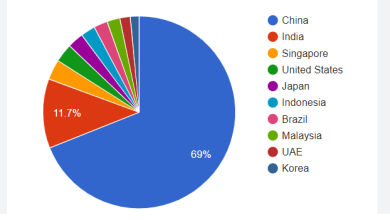Forex Robot Trading Strategies for Fundamental Analysis: Integrating Economic Factors

forex robot trading has evolved significantly with the rise of automated systems, commonly known as Forex robots or Expert Advisors (EAs). These robots are programmed to execute trades based on predefined criteria, including technical and fundamental analysis. While technical analysis focuses on historical price data, fundamental analysis looks at economic and geopolitical factors that can influence currency prices. In this article, we’ll explore how Forex robots can incorporate fundamental analysis into their trading strategies.
Understanding Fundamental Analysis in Forex Trading
Fundamental analysis in Forex trading involves studying economic indicators, geopolitical events, and other factors that can affect the value of currencies. These factors include interest rates, inflation, political stability, and economic performance indicators such as GDP growth and employment rates.
For example, if a country’s economy is growing rapidly, its currency is likely to strengthen as investors seek higher returns. Conversely, if a country is experiencing economic turmoil, its currency may weaken as investors seek safer assets.
Integrating Economic Factors into Forex Robot Trading Strategies
To integrate fundamental analysis into Forex robot trading strategies, developers can program their robots to react to key economic indicators and events. Here are some common strategies:
- Interest Rate Differentials: Central banks use interest rates to control inflation and stimulate economic growth. Forex robots can be programmed to buy currencies from countries with higher interest rates and sell currencies from countries with lower interest rates.
- Economic Calendar Events: Forex robots can be programmed to monitor economic calendars for key events such as GDP releases, employment reports, and central bank meetings. These events can cause significant movements in currency prices, and robots can be programmed to enter or exit trades based on the outcomes of these events.
- Sentiment Analysis: Forex robots can analyze news headlines and social media sentiment to gauge market sentiment. For example, if there is positive news about a country’s economy, the robot may buy that country’s currency in anticipation of a price increase.
- Correlation Analysis: Forex robots can also analyze the correlation between different currency pairs and other asset classes. For example, if there is a strong correlation between the price of oil and the value of a commodity currency like the Canadian dollar, the robot may trade based on movements in the price of oil.
- Political Events: Geopolitical events such as elections, wars, and trade disputes can also affect currency prices. Forex robots can be programmed to monitor political news and adjust their trading strategies accordingly.
Risks and Challenges
While integrating fundamental analysis into Forex robot trading strategies can be profitable, it also comes with risks. Economic indicators and geopolitical events can be unpredictable, and a robot’s trading strategy may not always be able to accurately predict market movements.
Additionally, programming a Forex robot to effectively integrate fundamental analysis requires a deep understanding of both economics and computer programming. Developers must carefully test their robots and continually optimize them to ensure they are making profitable trades.
Here are some benefits of using forex robots:
- 24/7 Trading: Forex robots can trade round the clock without the need for human intervention. They can monitor the market continuously and execute trades based on their programmed strategies, even when the trader is not available.
- Elimination of Emotional Bias: Emotions can often cloud judgment and lead to poor trading decisions. Forex robots operate based on predefined rules and algorithms, eliminating emotional bias from the trading process. They make objective decisions based on the programmed strategy, rather than being influenced by fear, greed, or other emotional factors.
- Backtesting and Optimization: Forex robots usually come with backtesting and optimization capabilities. Traders can test their strategies on historical data to assess their performance and make necessary adjustments. This allows for refining and optimizing trading strategies to improve their overall effectiveness.
- Speed and Efficiency: Forex robots can execute trades at high speeds, enabling them to take advantage of short-term market opportunities that may arise. They can scan multiple currency pairs simultaneously and react instantly to market conditions, which can be challenging for human traders.
- Diversification: Forex robots can trade across multiple currency pairs and strategies simultaneously, providing diversification in trading. This helps spread risk and potentially increases the chances of finding profitable trades.
- Discipline and Consistency: Forex robots strictly follow predefined trading rules and strategies, ensuring consistency in trading decisions. They help traders stick to their plan and avoid impulsive or emotional trading.
Conclusion
forex robot trading strategies that integrate fundamental analysis can be powerful tools for traders looking to automate their trading. By programming robots to react to key economic indicators and events, traders can take advantage of market opportunities that would be difficult to exploit manually.
However, it’s important to remember that no trading strategy is foolproof, and there are risks involved in Forex trading. Traders should carefully consider their risk tolerance and investment goals before using Forex robots or any other automated trading system.




